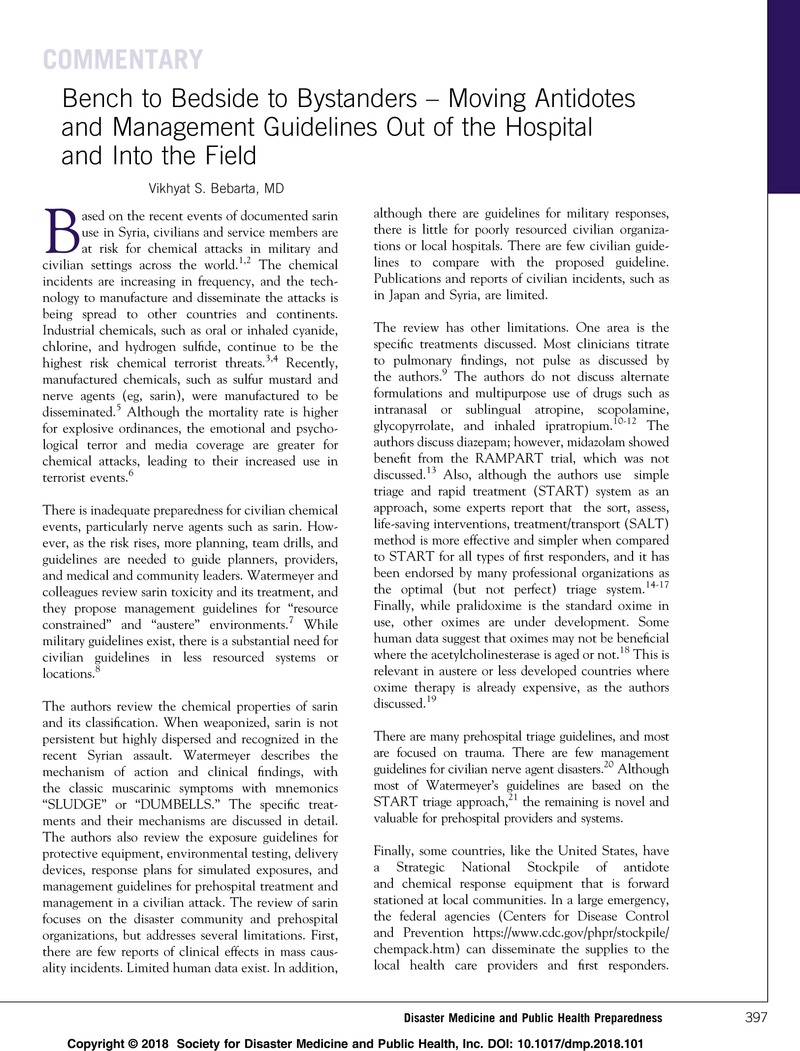Crossref Citations
This article has been cited by the following publications. This list is generated based on data provided by Crossref.
Satyamitra, Merriline M.
Andres, Devon K.
Bergmann, Julie N.
Hoffman, Corey M.
Hogdahl, Thomas
Homer, Mary J.
Hu, Tom C.
Rios, Carmen I.
Yeung, David T.
and
DiCarlo, Andrea L.
2023.
Overlapping Science in Radiation and Sulfur Mustard Exposures of Skin and Lung: Consideration of Models, Mechanisms, Organ Systems, and Medical Countermeasures: Overlapping science in radiation and sulfur mustard injuries to lung and skin.
Disaster Medicine and Public Health Preparedness,
Vol. 17,
Issue. ,



